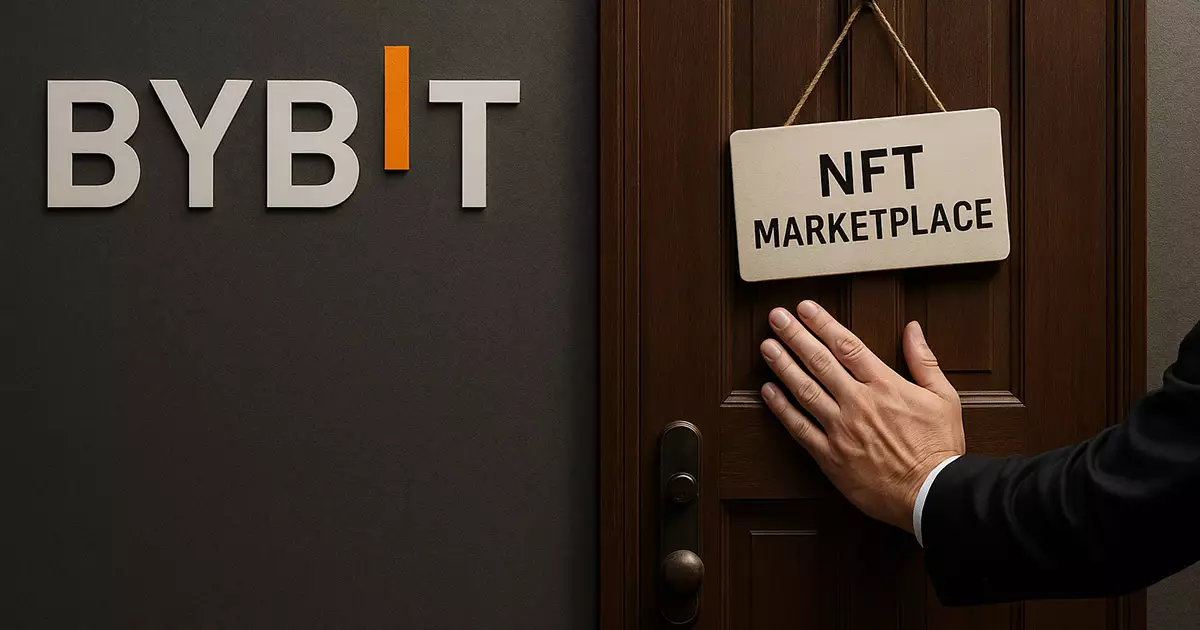The curtain is closing on the once-vibrant world of NFT marketplaces. Bybit’s recent announcement to shutter its NFT Marketplace alongside other products marks a stark reality check for an industry that has been gripped by a fierce downturn. As the exchange aims to “streamline offerings and enhance user experience,” it’s evident what lies beneath those words: a painful acknowledgment that the digital collectibles landscape has faltered. The decline in demand and trading activity isn’t just a passing phase; it signals a robust shift in consumer sentiment that cannot be ignored.
A Dwindling User Base and Plummeting Volumes
Data from blockchain analytics firm DappRadar paints a grim picture. Once, NFT trading was all the rage, with the high-energy atmosphere captivating over half a million active wallets. Now, those numbers have dwindled to fewer than 20,000. This alarming drop — a staggering 95% fall in trading volumes for leading collections since their 2021 peak — raises questions about the sustainability of this market sector. Such a drastic decline places the NFT market more in the realm of niche collectibles rather than a revolutionary advance in digital ownership.
The substantial 63% year-over-year drop in total NFT sales during the first quarter, falling to just $1.5 billion, underscores a broader trend of disinterest. If we consider that sales in March alone experienced a decline of 76% compared to the same month last year, it’s clear that the dream of mainstream integration has given way to disillusionment. Market darlings like Bored Ape Yacht Club have struggled to maintain relevance, highlighting how quickly the glossy veneer of ‘digital gold’ has tarnished.
Competing Priorities Amid Security Concerns
Bybit’s retreat isn’t entirely driven by dwindling demand and market dynamics; it also follows an unsettling breach that resulted in the theft of approximately $1.4 billion due to North Korea-linked hackers. This incident symbolizes the pervasive issues related to security in cryptocurrency and NFT markets. As regulatory scrutiny intensifies and fears about asset vulnerability amplify, exchanges like Bybit are under considerable pressure to realign their focus and safeguard user assets, while also grappling with the fallout of eroded trust.
Just as Bybit reevaluates its operational strategies, other notable players in the NFT arena, such as Kraken and LG Electronics, have also decided to pull the plug on their NFT initiatives. This trend raises the question: has the financial and operational commitment to NFTs overstepped its bounds, leading corporations to reassess their investments?
A Glimmer of Hope or a Passing Fad?
Despite the sweeping downturn, some niche projects oddly continue to thrive. Collections like Pudgy Penguins and Doodles have managed to buck the trend, attracting significant sales and attention through strategic partnerships. These outliers raise an intriguing point: Is there still potential for curated, community-driven NFT collections, or is this merely a fleeting whim in the oversaturated digital landscape?
As the dust settles on what once was an exhilarating surge toward digital ownership, the reality is sobering. The NFT market is at a crossroads, where the allure of collectibles is fading in the face of security concerns, reduced demand, and shifting market focus. One thing is certain: the road ahead will require careful consideration of what digital ownership truly means in a world all too eager to cast aside its latest fads.


Leave a Reply